By Hiro Yoshida
Having missed out on the 2018 PyeongChang Olympic Games, Laurence Fournier Beaudry and Nikolaj Sørensen took the decision to switch from representing Denmark to Canada in pursuit of their ultimate dream. With a few months of competing for Canada already under their belts, the team talk about how this transition came about.
I had previously interviewed Fournier Beaudry and Sørensen in Moscow, Russia at the European Championships in January 2018. Still skating for Denmark at the time, they had long resigned themselves to not being able to travel to South Korea with their peers the following month for the Olympics and were looking forward beyond it already.
“Of course, we had bad times when we learned the final decision,” Fournier Beaudry said at the time. “Even if it doesn’t happen now we are planning to continue.”
“I think what’s been important for us is really not to try and feel everything and so sadness often turns into anger,” Sørensen added. “And then you are angry, and you come here, and you see all the happy people and they are going to the Olympics. We are just really appreciating that they get to go.”
Just days after the PyeongChang Olympics concluded, the news broke that Fournier Beaudry and Sørensen were being released by Denmark to represent Canada. They had in fact approached Danish Skating Union officials on their final night at those European Championships in Moscow.
“We told our President and Vice President in Moscow on the last night with our coaches there,” Sørensen recalled. “It was a very emotional meeting for us. They were very supportive, and they also said they felt that was what was going to happen. They weren’t surprised. They were very happy that we decided to pursue our dream even if it meant not skating for Denmark. They wanted us to go as far as we can in our sport and not be limited because of a country. Because they know they can’t help us. They tried everything they could. Unfortunately, it had nothing to do with the federation and everything to do with the country and the politics of immigration.
“We had been thinking about it before, but we wanted to be in the year and present. We wanted to make sure that just out of respect the federation were the first ones to get the news. It was just natural for us right after that Europeans as the Olympics approached.”
International Skating Union rules preclude skaters who have changed federations from competing internationally for a period of one year from the date of their last competition. This meant that Fournier Beaudry and Sørensen had to sit out most of the 2018/2019 season and they had no guarantee that they would be selected to represent Canada at all.
“We didn’t want to wish for anything, and we asked for nothing,” Sørensen said. “We really thought it was going to be a hard year. We are going to be on our own for most of the season and until we prove ourselves at nationals, make a placement and put out good performances, we probably won’t have much support. Little did we know it was completely the opposite. Mike Slipchuk, the high-performance director of Skate Canada, was on board straight from the beginning and the whole board of directors really considered all the results we had done for Denmark as valid for the Canadians. They invited us to the high-performance camp. We weren’t even on the national team. They wanted to put us on the team straight away because they maybe knew or could feel what was about to happen or going to happen. It has just been overwhelming how amazing they have been straight from the beginning and we’re just so grateful that we have been taken into this new family.”
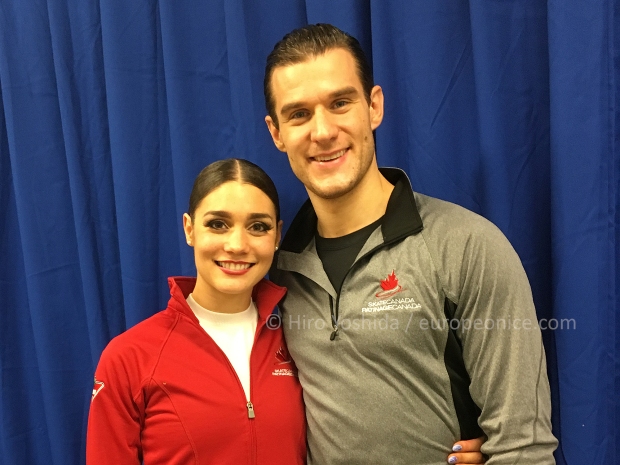
Even though the name of the country they now represent has changed, there were no adaptations necessary to their training environment in Montreal where they are coached by Marie-France Dubreuil, Patrice Lauzon and Romain Haguenauer. After spending almost a decade living in Canada, Sørensen expects to be able to obtain a Canadian passport before summer 2020. He will also be able to retain his Danish citizenship as a law banning Danes from having dual nationality was repealed in 2016.
“It was also just a natural transition for us,” Sørensen said. “We were already in Canada. Laurence was Canadian. It was all set up for us to compete for Canada in the right way. I think many teams are forced out of their own country and we are just so very fortunate to be able to be at home, to be in Canada, represent Canada and train full-time in Canada with Canadian coaches who have done it all before us for Canada. It’s just an environment that’s so great. They nurture so many athletes from so many different countries. It’s special for us, maybe more so than the others, to be at home and train at home. To always live in the country you represent is something very special and I’ve really enjoyed my nine years now that I’m in Montreal now and looking forward to finally becoming a Canadian citizen next year.”
They also decided to retain their flamenco free dance that they skated during their final season of representing Denmark.
“There are so many aspects in that programme,” Sørensen said. “There is the relationship between the two of us. It really showcases our skating skills and transitions. We have very nice lifts without being too acrobatic. It’s spectacular in a way that really works with the music and that’s something we have to thank Patrice for because he is someone who has a major hand in making our lifts look good and so that you can stay in character in the lifts.
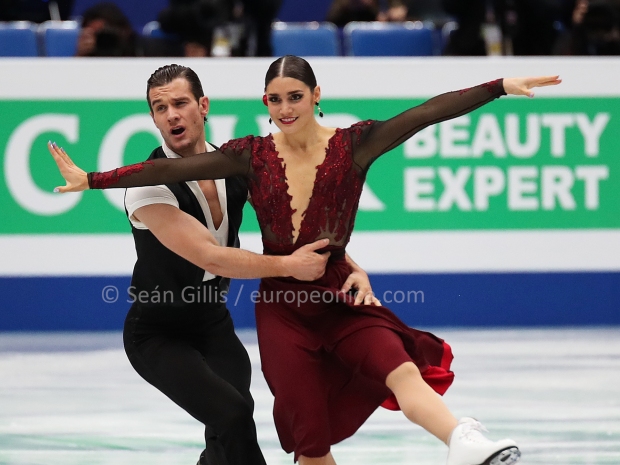
“I think what we want to show with this programme is our personality and show the fight and connection that we bring out together,” Fournier Beaudry said. “He has a very masculine energy on the ice. I think this a programme that fits both of us.”
“It’s not a programme which we have attached a story to, but it just comes really naturally,” Sørensen added. “We look at each other and we know what we are doing.”
Fournier Beaudry and Sørensen originally teamed up in 2012 after the dissolution of their previous respective partnerships and being in the right place at the right time brought them together.
“My partner stopped skating in January after Canadian Nationals and I was looking for a partner,” Fournier Beaudry said. “I did a few try-outs. I knew he was in town because of his past partner so I did trials with him. Then finally he ended up skating with Vanessa Crone
“We had actually signed all the papers to skate for Canada,” Sørensen said. What ended up happening was she basically decided not to skate anymore.”
“I was not training with Marie-France and Patrice yet,” Fournier Beaudry continued. “I asked my coaches if I could go to their ice rink and do stroking with them because there were high level teams there. I went there two or three times a week and I was doing stroking lessons with them alone while they were skating on the ice. I was crossing my fingers hoping maybe there is something that is going to happen for me. I was almost losing hope when one day I left the ice rink and I went to work and I received a text message from Nik saying ‘Hey, do you want to come and skate with me tomorrow?’ I think it was the best day of my life. I came to the ice rink and I didn’t understand exactly what it meant because I said, ‘Yes, I am going to be there. What time?’ I arrived at the ice rink and nothing was explained except ‘Okay, you’re going to start learning the free dance they had. You’re going to take the place of Vanessa.’
Fournier Beaudry and Sørensen are not only a couple on the ice, but also off the ice as well. While acknowledging that it is not for everyone, they have found mixing their professional and private relationships has worked for them.
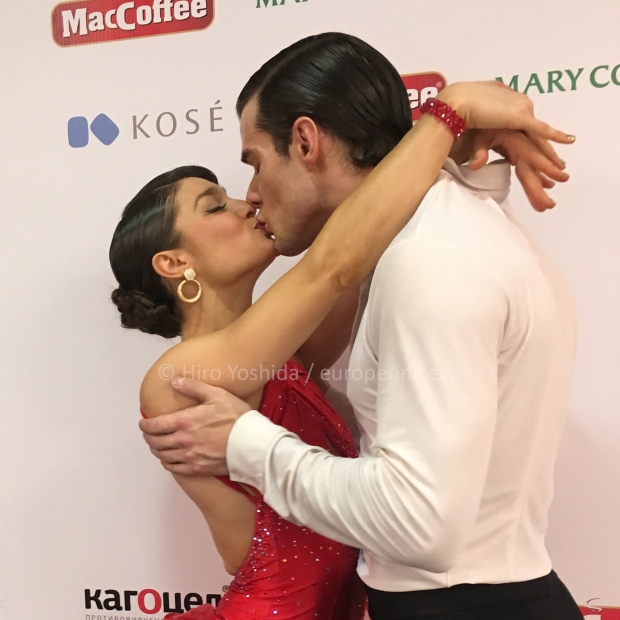
“There’s so much emotion in ice dance I think it’s sometimes hard not to blur the lines,” Sørensen said. “Once you make that commitment it’s not an easy choice to decide to date your partner because it does come with complications. It most certainly does not make everything easier always. We have a great relationship and I think for us it’s one of our strengths. Often when we talk to journalists they always ask us is it not hard. They always want to find drama in that, and we just have to look at each other and say you know it’s actually really easy. We live together, we work together, we skate together, we take the same car in the morning if we can plan it.”
The team have a big hand in what they put on the ice for competitions. Fournier Beaudry edits their programme music herself and they are very appreciative of the collaborative style of coaching that they have in Montreal.
“I think what our coaches have been driving us as a mentality is that we are in charge of our own career and the fact that they involve us so much in the process of creation makes us even more attached in the programme,” Fournier Beaudry said. “It brings our own selves into the programme for everybody. They really help finding your own style, finding what you want to do, what’s the best for you, but at the same time they want your own opinion. They don’t want you to skate to music you don’t like. It’s something very unique and we are very lucky to have them this way.
“You’re responsible for your own success and you’re responsible for your own failure. They are there to support you in all your decisions and your training, but they cannot do the work for us.”
The opportunity to represent Canada now provides them with a path to the Olympics, but the change has not been risk-free. When skating for Denmark, Fournier Beaudry and Sørensen had no domestic rivals. As Canadians, being selected for the national team was not a foregone conclusion. They made their Canadian Figure Skating Championships debut as a team in January where they finished third and received berths to the Four Continents and World Championships. It was an eye-opening experience, particularly for Sørensen.
“It was the most stressful event we have ever done,” he said. “It’s just a different level of commitment we’ve really stepped into this year and changed our way of looking at how we want to proceed as athletes. It’s pushed us in the right direction to live with a champion mind set of always evolving and always getting better and knowing you have to be able to go out there and do your best at every competition because it can be your last of the year. I thought it was the same and I never really understood the difference – Canadians, Russians, Japanese or Americans might feel about getting to Worlds – because we were going every year for Denmark. We didn’t really have to qualify. We had to get the minimum score, but after that we would be set because there was nobody else. It has been very special for me to live that experience and really feel that pride that goes hand in hand with qualifying for your country and getting out there.”
Even though they now face tougher competition domestically, they also have support from a federation with far greater resources.
“It’s for sure that the Danish federation was helping as much as they could,” Fournier Beaudry said. “What changed a little bit is now there is more of a team.”
“I think the biggest change is having the structure of something like the high performance camp, continuing support and evaluation from judges and specialists, just making sure that your content is ready and when you get out there in competitions there are no surprises and that you know that all the elements you have are good,” Sørensen said. “Obviously you still have to perform them well because if not you won’t get your levels, but it’s been really amazing to see the difference between a small federation and a big federation. There are perks to both.”
They represented Canada for the first time at Four Continents in February. There was a degree of culture shock in going from competing at the oldest ISU figure skating championship to the newest in the space of a year.
“Four Continents feels like a Grand Prix,” Sørensen said.
“And Europeans feels like Worlds because there are many more teams,” Fournier Beaudry added.
“I guess the biggest difference was that it wasn’t really familiar to us,” Sørensen continued. “There were a lot of faces we didn’t know.”
“It feels like when you do Europeans, it’s a rehearsal for Worlds,” Fournier Beaudry explained. “When you arrive at Worlds now, I had forgotten how big it was.”
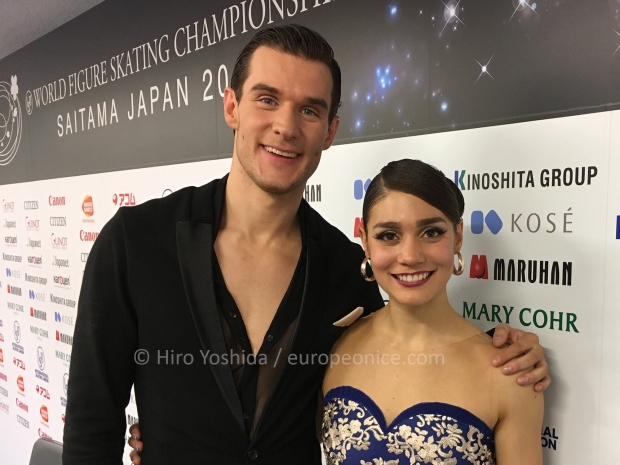
Fournier Beaudry and Sørensen came sixth at Four Continents and at the World Championships finally cracked the top ten after a number of seasons of knocking on the door. The duo sees it as just the first step towards their final objective.
“For the next two years, I think it’s to improve on what we do well, whatever that might be, and just really work hard on all the little things too that we want to change, what we feel like we don’t do so well and just continue to grow to a culmination of hopefully qualifying for the Olympics,” Sørensen said. “And then not only qualifying for the Olympics, but also doing extremely well at the Olympics. We could say that maybe now our commitment has changed over the past year to the sport and to the results we would like to obtain.
“We want to come back next year maybe with some new material that we haven’t really tried before in the long programme. Try a style that’s a little bit different and keep improving every year. We never like to put a goal for points or a goal for placement. I just think in our hearts we just know what we want and what we would like to achieve and just building on that from competition to competition. We’re talking three years, but really it’s going to go super-fast.”
Sørensen reached another milestone when he turned 30 in February of this year. However, he and Fournier Beaudry feel as if they are just hitting their stride right now as skaters.
“Now I’m 30 I just feel better than ever. We train much smarter. Our off-ice training is designed to make us better athletes.
“It’s always a challenge. I don’t want to use the word easy, but it’s exciting and it is easy because when you are happy with what you are doing and you find small challenges, it’s easy. This is the easy part of our life. Skating is pretty easy.”
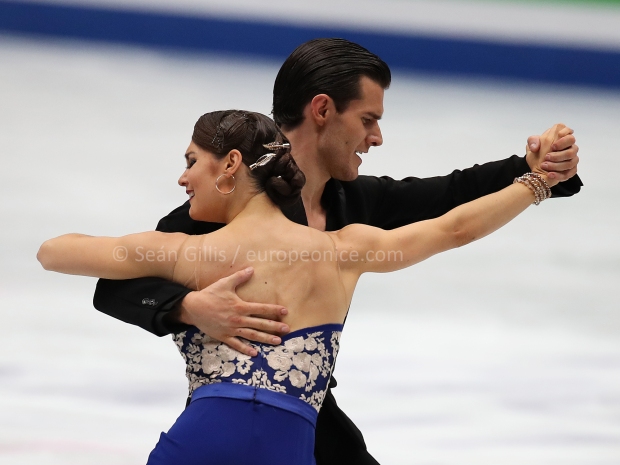
One comment